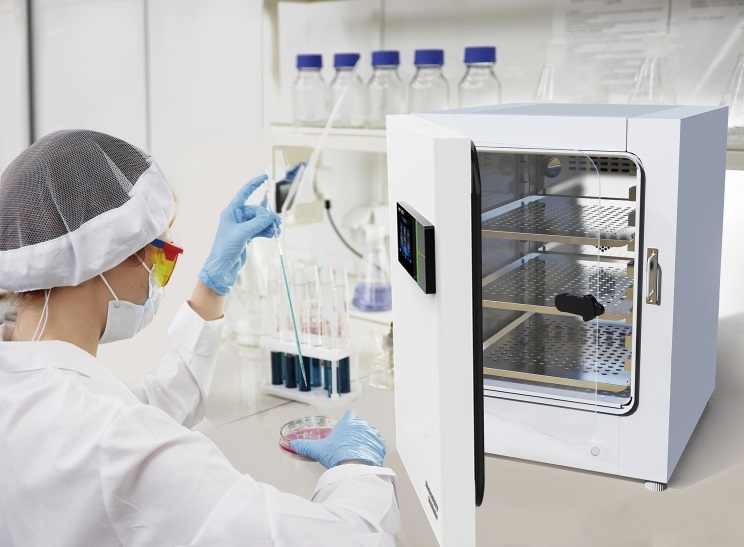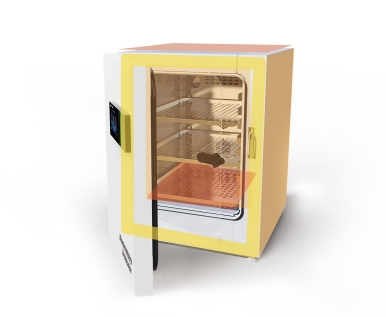En el mundo de la investigación científica, la seguridad de los productos y el diagnóstico clínico, el cultivo de microorganismos en condiciones controladas es una necesidad fundamental. incubadora microbiana , también conocida como incubadora de laboratorio, desempeña un papel crucial en este proceso. Ya sea que se realice una investigación en un laboratorio farmacéutico o se realicen pruebas de seguridad alimentaria, este equipo garantiza un crecimiento microbiano preciso y reproducible.
En este artículo, exploraremos qué son las incubadoras microbianas, cómo funcionan, sus diferentes tipos y qué considerar al seleccionar una para su laboratorio.

A incubadora microbiana es un dispositivo de laboratorio especializado diseñado para proporcionar una entorno estable y controlado —normalmente temperatura, humedad y, a veces, composición del gas—para el crecimiento y mantenimiento de microorganismos como bacterias, levaduras, hongos y mohos.
A diferencia de los hornos de laboratorio estándar o las cámaras de secado, las incubadoras microbianas están diseñadas para cultivo biológico , garantizando fluctuaciones mínimas de temperatura y contaminación. Son esenciales en sectores como:
Diagnóstico biomédico y clínico
Desarrollo farmacéutico
Pruebas de alimentos y bebidas
Microbiología ambiental
Instituciones académicas y de investigación
Las incubadoras microbianas modernas ofrecen una variedad de características para respaldar entornos de crecimiento microbiano precisos y estériles:
La mayoría de las incubadoras mantienen temperaturas entre 5 °C por encima de la temperatura ambiente hasta 65 °C , con Precisión de control de ±0,1 °C Utilizando controladores PID digitales. Esto es crucial para el cultivo de organismos sensibles a la temperatura.
Algunas incubadoras proporcionan una sistema de humidificación natural a través de bandejas de agua, mientras que los modelos avanzados ofrecen control activo de la humedad , manteniendo la humedad óptima para el crecimiento.
Las incubadoras de CO₂ mantienen niveles específicos de CO₂ (normalmente un 5 %) para el cultivo de células o microbios dependientes del CO₂. Otras incluyen condiciones anaeróbicas para anaerobios obligados.
Las incubadoras pueden utilizar convección natural (flujo de aire más silencioso y suave) o convección forzada (temperatura uniforme y recuperación más rápida después de la apertura de puertas).
Características como protección contra sobretemperatura , alarmas de puerta , Esterilización UV , y Filtración HEPA ayudar a proteger tanto a los usuarios como a las muestras de la contaminación o de eventos térmicos.
Dependiendo de la aplicación y el tipo de microorganismo, las incubadoras microbianas vienen en varias configuraciones:
|
Tipo |
Descripción |
Aplicaciones |
|
Incubadora estándar |
Unidad básica de temperatura controlada |
Cultivo microbiano de rutina |
|
Incubadora de CO₂ |
Controla tanto la temperatura como el CO₂ |
Cultivo celular, microbios sensibles al CO₂ |
|
Incubadora anaeróbica |
Mantiene condiciones libres de oxígeno. |
Cultivo de bacterias anaeróbicas |
|
Incubadora con control de humedad |
Ofrece un control preciso de la temperatura y la humedad relativa. |
Cultivo de moho u hongos |
|
Incubadora con agitación |
Incluye un agitador orbital. |
Cultivos líquidos, fermentación |

Las incubadoras microbianas se utilizan en diversas disciplinas, entre ellas:
Cultivo de bacterias y hongos para diagnóstico o investigación
Recuento y enumeración de colonias
Prueba de susceptibilidad a los antibióticos
Prueba de esterilidad en productos farmacéuticos
Control del proceso de fermentación
Incubación de muestras ambientales
Demostraciones de laboratorio educativas
Su precisión y flexibilidad los hacen indispensables tanto en industrias reguladas como en la investigación académica.
La elección de la incubadora adecuada depende de las necesidades específicas del laboratorio. A continuación, se presentan las consideraciones clave:
Tamaño y capacidad de la cámara :Desde pequeñas unidades de sobremesa hasta grandes modelos de suelo
Rango de temperatura y estabilidad :Dependiendo de los microbios y la duración del estudio.
Requisitos de CO₂ o anaeróbicos :Para el crecimiento microbiano especializado
Material interior :El acero inoxidable es más duradero y fácil de esterilizar.
Acceso y usabilidad :Ajustabilidad de estanterías, ventanas de visualización, interfaces de pantalla táctil
Registro de datos :Puertos USB, conectividad Wi-Fi y alarmas para monitoreo
Mantenimiento y calibración : Fácil acceso para limpieza y validación regular de la temperatura.
Una buena incubadora microbiana no sólo debe cumplir con los requisitos técnicos sino también ofrecer confiabilidad a largo plazo , bajo mantenimiento , y Operación fácil de usar .
Para garantizar resultados consistentes y una larga vida útil, se recomiendan las siguientes prácticas:
Prelimpiar y esterilizar Todas las superficies internas y bandejas antes de usar.
Usar agua esterilizada en bandejas de humidificación y reemplazarlo regularmente
Calibrar sensores y controladores de temperatura cada 6 a 12 meses
Evite abrir las puertas con frecuencia para mantener la estabilidad interna.
Inspeccionar filtros de aire , sellos de junta , y Sensores de CO₂ periódicamente
Registrar las condiciones de funcionamiento y los eventos de alarma para su trazabilidad
Una rutina de mantenimiento preventivo extiende la vida útil de la unidad y ayuda a garantizar la precisión microbiológica.
La incubadora microbiana está experimentando innovaciones que se alinean con las demandas de los laboratorios modernos:
Controles inteligentes con pantallas táctiles, monitoreo basado en aplicaciones y alertas remotas
Sistemas modulares con opciones multicámara para condiciones simultáneas
Conectividad LIMS para la centralización y trazabilidad de datos
Elementos de calefacción y refrigeración energéticamente eficientes para reducir el impacto ambiental
Tecnologías de esterilización mejoradas , como los sistemas basados en plasma y UV-C
A medida que la investigación continúa evolucionando, el papel de Equipos de incubación inteligentes y sostenibles se vuelve cada vez más crítico.
Una incubadora microbiana es mucho más que una caja de calentamiento: es un instrumento de precisión que sustenta procesos clave de investigación y análisis en microbiología y campos afines. Al comprender sus tipos, funciones y criterios de selección, los laboratorios pueden tomar decisiones informadas que mejoran la precisión, el cumplimiento normativo y la eficiencia.
Ya sea que esté cultivando E. coli o preparando muestras clínicas, la incubadora adecuada le garantiza tener El entorno adecuado, cada vez .